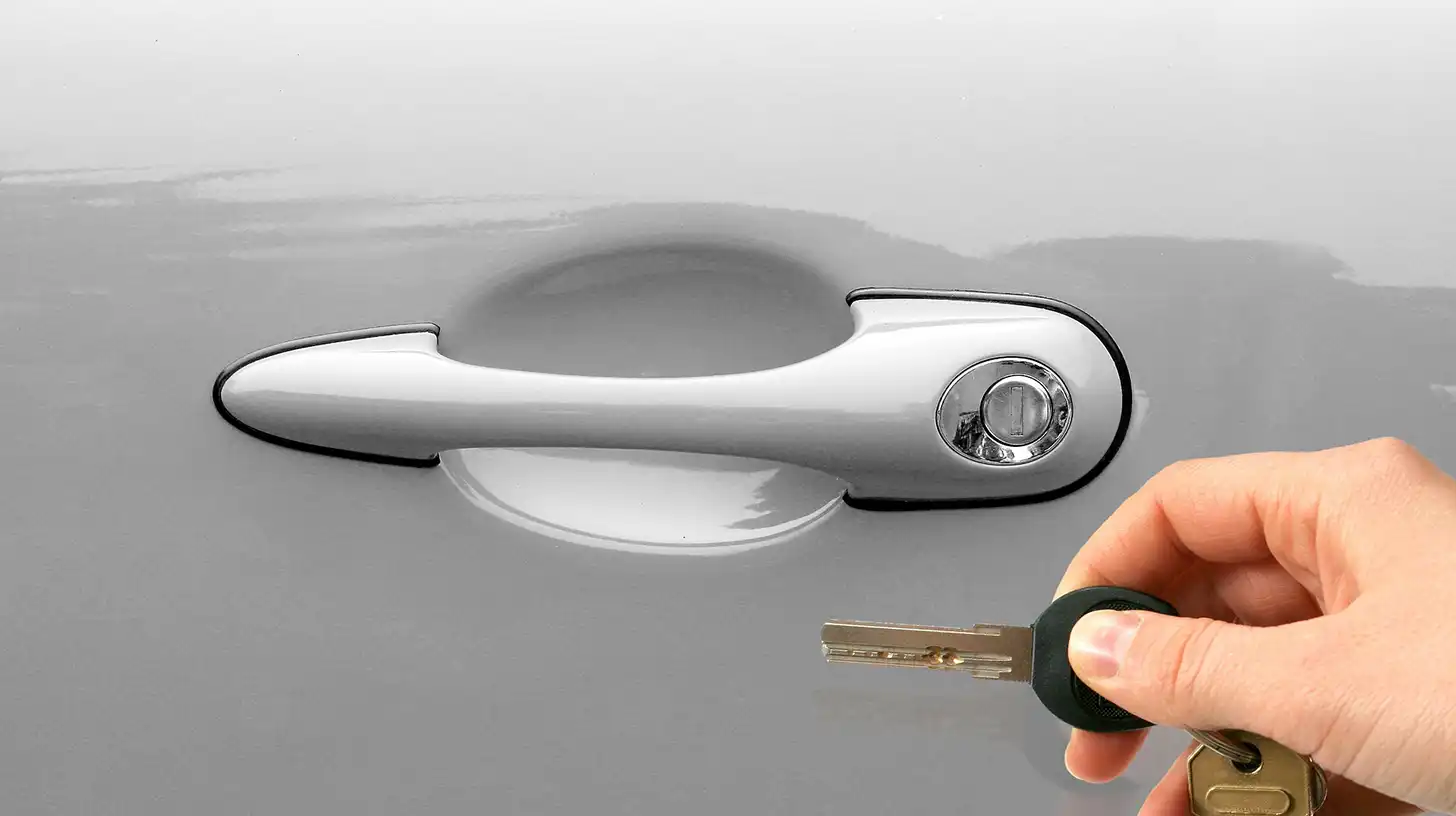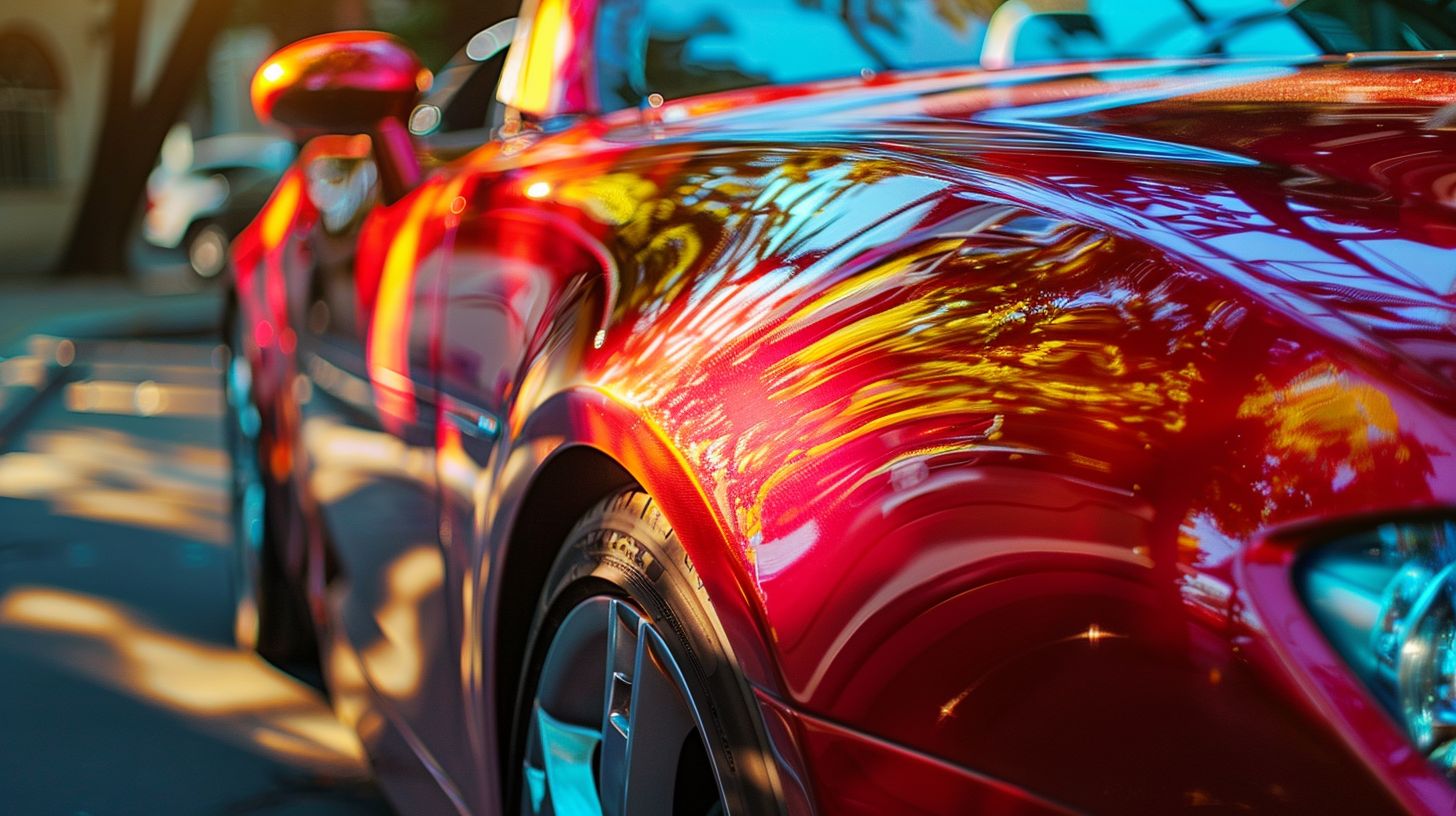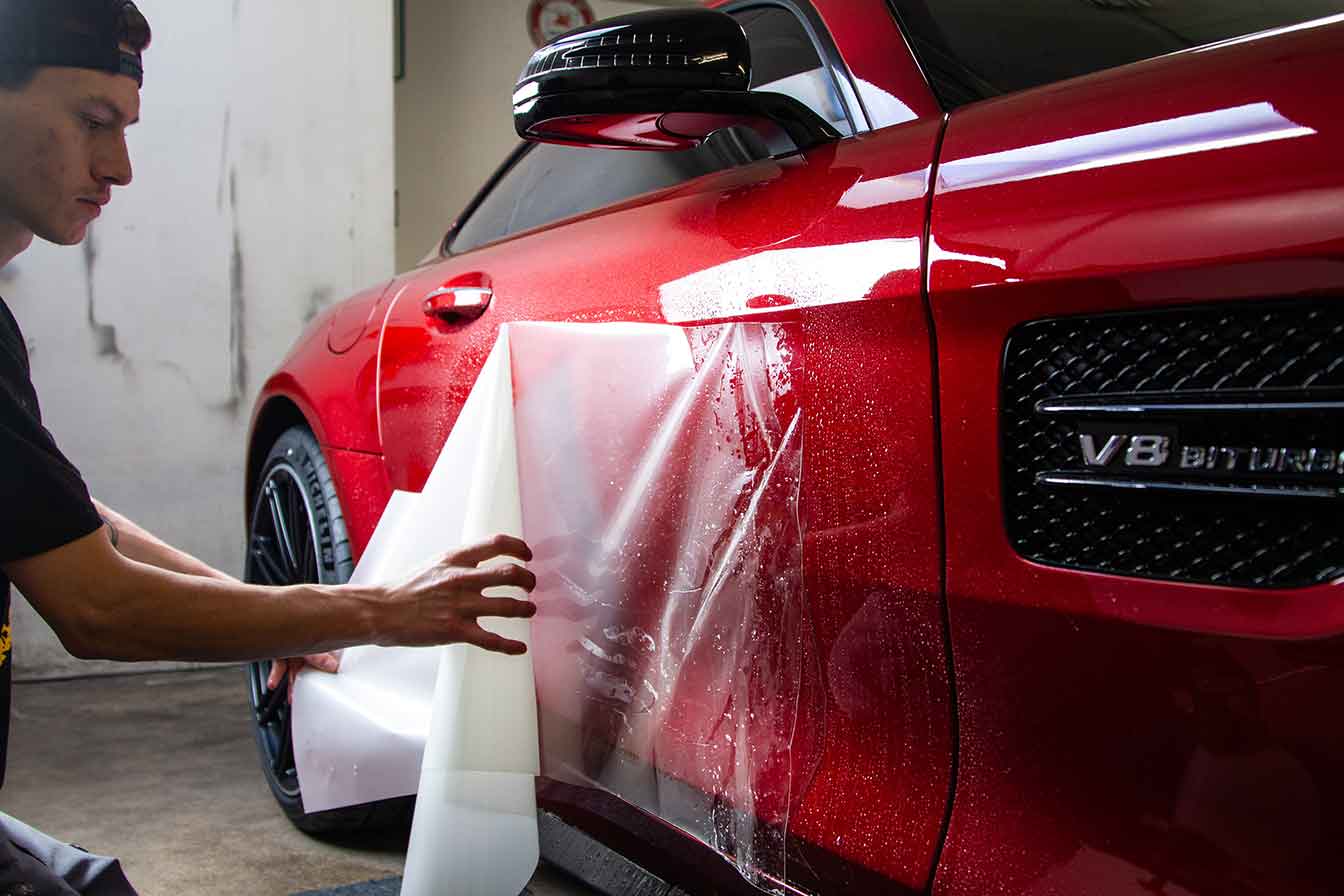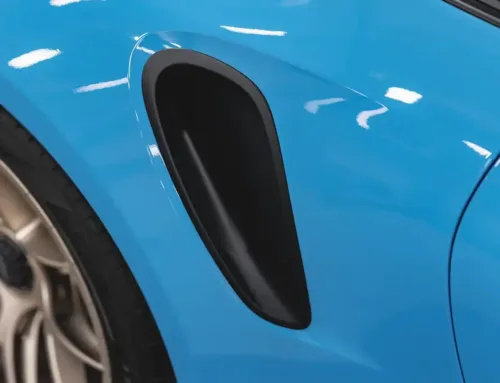Finding your car keyed is one of those moments that makes your stomach drop. Whether it happened in a parking lot near Garden of the Gods or outside your home in Briargate, that deliberate scratch down your paint feels personal.
After 20 years of fixing these exact problems for luxury dealerships and private owners here in Colorado Springs, I’ve seen every type of key damage imaginable—and more importantly, I’ve restored them all. The truth is, knowing how to repair keyed car damage properly means understanding that not all scratches are created equal, and the approach that works for a surface scratch won’t touch a deep gouge that’s reached the primer.

Key Takeaways
- Professional assessment determines whether you need touch-up, paint correction, or full panel respray
- The cost to fix keyed car damage ranges from $150 for minor scratches to $1,500+ for extensive damage
- Deep scratches that penetrate to metal require immediate attention to prevent rust, especially with Colorado’s weather
- Paint protection film prevents future keying damage and is worth considering after repair
- Professional repair maintains your vehicle’s value better than DIY attempts
Table of Contents
- Understanding Keyed Car Damage
- Professional Assessment: The First Critical Step
- How Professionals Remove Key Scratches from Cars
- Real Costs of Keyed Car Repair in Colorado Springs
- Why Professional Repair Beats DIY Every Time
- Protecting Your Investment After Repair
Understanding Keyed Car Damage

Nearly every week, someone drives into our shop on Fillmore St. with that same defeated look. Their car’s been keyed. Maybe it was random vandalism, maybe it was targeted—either way, they want to know how to fix their keyed car and get back to loving their vehicle again.
Here’s what two decades in the business has taught me: key scratches fall into three distinct categories, and each demands a different approach. Surface-level scratches that only affect the clear coat can often be handled with professional paint correction. These are the lucky ones—the scratches that look terrible but haven’t actually damaged the paint layers underneath.
Then you’ve got scratches that cut through the clear coat and into the base color. These are trickier. You can’t simply polish these out, no matter what that internet video promises. These require careful touch-up work, precise color matching, and expert blending to make the repair invisible. We see plenty of these from parking incidents around Chapel Hills Mall or downtown on Tejon Street.
The worst category? Deep gouges that reach the primer or metal. These aren’t just cosmetic problems anymore—they’re ticking time bombs for rust, especially with our freeze-thaw cycles here along the Front Range. One winter of moisture getting into that scratch, and you’re looking at a much bigger problem.
Suggested Reading: Clear Coat Restoration | Revive Your Ride’s Shine
Professional Assessment: The First Critical Step
When someone asks me how to repair keyed car paint, I always start with the same answer: proper assessment. You wouldn’t believe how many cars come to us after failed DIY attempts that actually made things worse. Touch-up paint applied too thick, clear coat that doesn’t match, or worst of all, aggressive buffing that created swirl marks across the entire panel.
Professional assessment isn’t just about looking at the scratch. We examine the surrounding paint condition, check for previous repairs, and determine the exact paint system your manufacturer used. That BMW parked at The Broadmoor uses a completely different paint technology than a Ford truck from Powers Boulevard. Each requires specific products and techniques.
The assessment also reveals whether you’re dealing with single-stage or multi-stage paint. Modern vehicles typically have multi-stage systems—primer, base coat, and clear coat—while some older vehicles or commercial trucks might have single-stage paint. This distinction completely changes the repair approach.
How Professionals Remove Key Scratches from Cars
The actual repair process for keyed cars depends entirely on that initial assessment. For clear coat scratches, we start with paint correction—a methodical process using specialized compounds and polishes. But this isn’t your typical Saturday afternoon detail job. Professional paint correction requires understanding of paint hardness, proper pad selection, and the right combination of heat and pressure.
For scratches that penetrate the color layer, the process becomes more like surgery. First, we clean the scratch thoroughly—any contamination trapped in there will ruin the repair. Then comes the delicate work of applying primer if needed, building up thin layers of perfectly matched paint, and carefully wet-sanding between coats. The goal isn’t just to fill the scratch; it’s to recreate the exact texture and finish of the surrounding paint.
The final step—and this is where experience really shows—is blending. A perfect color match means nothing if the repair has hard edges where it meets the original paint. Professional blending creates an invisible transition, fooling the eye completely. This is especially critical on hood and roof repairs where lighting changes constantly as you move around the vehicle.
Real Costs of Keyed Car Repair in Colorado Springs
Let’s talk real numbers, because knowing the cost to fix keyed car damage helps you make informed decisions. Minor clear coat scratches that can be addressed through paint correction typically run $150-$300 per panel. It’s not cheap, but it’s a fraction of what you’d pay for repainting.
Moderate scratches requiring touch-up and blending? You’re looking at $300-$800 per panel, depending on the vehicle and paint type. That Pearl White Lexus is going to cost more than a standard black sedan—pearl and metallic finishes require additional steps and materials. Deep scratches or multiple panels push costs higher.
According to AAA, the average insurance deductible for comprehensive coverage is $500, which means many keying repairs fall into that awkward zone where insurance might cover it, but barely. Plus, filing a claim can affect your rates—something many Colorado Springs residents discovered after our recent hail storms.
Why Professional Repair Beats DIY Every Time

I get it—those DIY touch-up pens at the auto parts store look tempting. Twenty bucks versus several hundred? But here’s what those products don’t tell you: color matching is an art form. Even with the correct paint code, factors like sun fade, previous repairs, and paint batch variations mean that “perfect match” rarely is. Cheap is usually expensive!
Professional shops use spectrophotometers—devices that read the actual color of your paint, not just what it should be according to the code. We can adjust for fade, account for metallic orientation, and blend repairs invisibly. That touch-up pen? It’s going to leave you with a raised line of slightly-off paint that catches every bit of light.
More importantly, professional repair preserves your vehicle’s value. We follow manufacturer procedures, use OEM-approved materials, and document everything properly. When you go to sell that car or trade it in, professional repairs won’t raise red flags. DIY repairs? They’re usually the first thing a trained inspector spots.
There’s also the time factor. A proper DIY repair isn’t a weekend project—it’s multiple days of prep, painting, sanding, polishing, and hoping you got it right. Meanwhile, you’re driving around with a keyed car, watching that scratch every time you walk up to your vehicle. We typically complete most repairs in one to two days, getting you back to loving your car, truck or SUV instead of cringing at it.
Further Reading: Is Paint Correction Worth It?
Protecting Your Investment After Repair

Once we’ve restored your paint, the conversation shifts to protection. Paint protection film (PPF), otherwise known as Clear Bra, has become one of our most requested add-on services after keying repairs. Modern PPF is nearly invisible but provides a sacrificial layer that takes the damage instead of your paint. We’ve installed it on everything from daily drivers to exotic cars that park at The Country Club of Colorado.
The high-traffic areas—hood, mirrors, bumper and fender tips—are especially vulnerable. A partial PPF installation covering these zones start at $900-$1,250, but can prevent thousands in future repairs. For vehicles that regularly park in public areas around downtown or UCCS campus, it’s cheap insurance.
Ceramic coating is another option, though it won’t prevent keying—nothing short of PPF or a guard dog will do that. What ceramic coating does provide is easier cleaning and better resistance to environmental damage, helping your repair blend perfectly with the surrounding paint for years to come.
“Used springs detailing for paint correction, detail and a full front end clear bra/tint/ceramic package. Only problem I had is mud wont stick to my Rubicon anymore! They did great work and will use on my other cars in the future.” ~ Aj Visage
Further Reading: Ceramic Coating vs PPF: Which Paint Protection is Best?
Conclusion

After 20 years of making keyed cars look new again, I’ve learned that how to repair keyed car damage isn’t just about the technical process—it’s about understanding what each vehicle owner needs. Some want perfection, others want good enough, and many just want to stop being reminded of the vandalism every time they see their car.
The key (pardon the pun) is choosing the right approach for your situation. Professional repair isn’t always cheap, but it’s always right. Whether you’re driving a luxury sedan or a work truck, your vehicle deserves repair work that maintains its value and appearance.
If you’re dealing with keying damage anywhere in Colorado Springs or the surrounding areas, book an appointment and have those unsightly scratches removed. We’ll assess the damage honestly, explain your options clearly, and restore your car to the condition it deserves. Because at the end of the day, this isn’t just about fixing scratches—it’s about getting you back to loving your vehicle again.
Further Reading: Paint Correction | Everything You Need To Know
Frequently Asked Questions
How long does it take to fix a keyed car?
Most single-panel keying repairs take 1-2 days in our shop. Simple clear coat scratches might be same-day service, while extensive damage requiring paint work needs proper curing time between coats. We’re not the fastest—those quick-turn shops exist—but we’re thorough. Your car will be done right the first time.
Will the repair be noticeable?
When done professionally, keying repairs are invisible. We use factory-matched paint, proper blending techniques, and finish with the same texture as your original paint. The only time repairs show is when corners are cut—mismatched paint, poor blending, or incorrect clear coat application.
Can ceramic coating prevent key scratches?
Ceramic coating provides excellent protection against minor scratches and swirls, but it won’t stop deliberate keying. For that level of protection, you need paint protection film. Think of ceramic coating as armor against the environment, while PPF is armor against physical damage.
Should I file an insurance claim for keying damage?
If your repair cost exceeds your deductible by at least $500, filing a claim often makes sense. However, consider your claims history and potential rate increases. We provide detailed estimates that help you make this decision.
How much does it cost to fix a keyed car in Colorado Springs?
Costs vary significantly based on damage severity. Minor scratches: $150-$300 per panel. Moderate damage requiring paint work: $300-$800 per panel. Extensive damage or multiple panels: $1,000-$3,000+. Luxury vehicles and special finishes cost more due to materials and complexity.
Can key scratches rust?
Deep scratches that reach bare metal will absolutely rust, especially with Colorado’s weather patterns. Our freeze-thaw cycles, road salt and Magnesium Chloride accelerate corrosion. Even if you’re not ready for full repair, getting primer on exposed metal prevents expensive rust damage later.



